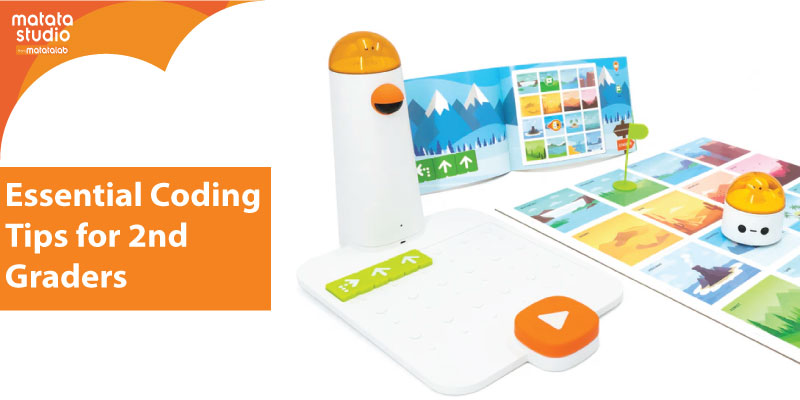Welcome to our FAQs on coding for grade 2 students! As technology becomes an integral part of our lives, introducing coding at an early age is a must. This guide answers common questions from parents and teachers about why and how coding can benefit young learners, helping them build essential skills for the future.
Q1: Why should my 2nd grader learn coding? Isn’t it too early? Coding at this age helps develop problem-solving skills, creativity, and logical thinking. It’s not just about writing code; it’s about teaching kids how to think in a structured way. These skills are valuable in all areas of learning and can give them a strong foundation for the future.
Q2: What exactly can a 7 or 8-year-old learn about coding? At this age, students can understand basic concepts like sequences, loops, and simple conditionals. We introduce these ideas through fun, interactive activities, often using block-based coding platforms like Scratch Jr. or Code.org, where they can visually manipulate code blocks to see immediate results in their projects. The MatataStudio Coding Set offers a hands-on, screen-free experience for kids with tangible coding blocks.
Q3: How do you incorporate coding into a busy 2nd-grade curriculum? Coding for grade 2 students is often integrated into subjects like math, science, and reading. For example, while learning about sequences in coding, students reinforce their understanding of sequences in math. It’s also a great way to bring storytelling to life, allowing them to animate their stories using code. It’s about enhancing what they’re already learning.
Q4: Do kids need to have prior computer experience? Not at all! Start from the basics, ensuring that all students become comfortable with using a computer or tablet. The focus is on making it a fun and engaging experience. By the end of the course, students will be able to navigate coding platforms with confidence.
Q5: As a parent how can I support my child’s coding journey at home? You don’t need to be a coding expert to support your child! Encouragement is key. Ask them to show you what they’ve been working on, and let them teach you a bit of what they know. There are also many free online resources and apps designed for kids, which can make learning at home both fun and interactive.
Q6: I’m worried about my child spending lots of time in front of a screen? How much time do they spend coding? We suggest balancing screen time with off-screen activities that reinforce coding concepts, like puzzles and group problem-solving games. Typically, coding sessions are kept short, around 20-30 minutes, to ensure students stay engaged without overdoing screen time. MatataStudio uses a physical robot, the MatataBot, along with coding blocks and a command board. Instead of writing code on a computer, students use coding blocks to make the Robot move according to the commands.
Q7: Will coding help my child in other subjects? Absolutely! Coding for grade 2 students encourages critical thinking and precision, which are valuable in all subjects. For instance, coding can improve math skills through logical reasoning, and it can enhance reading comprehension by helping them structure stories in a clear, logical sequence. These skills often translate into better performance across the board.
Q8: What if my child finds coding too difficult or frustrating? It’s normal to face challenges, but we approach coding as a team effort, with lots of encouragement and support. The coding environment in schools across Dubai is designed to celebrate small success to build the child’s confidence.
Q9: How do you measure progress in coding for young students? Progress is measured through the projects they create. Rather than tests, we look at how they apply what they’ve learned to solve problems or build something new. We also consider their ability to work through challenges and explain their thinking. It’s more about the process than the final product at this stage.
Q10: What are the long-term benefits of starting coding at this age? Early exposure to coding can spark an interest in technology and related fields, which are increasingly important in our world. Beyond that, it fosters a mindset of curiosity and resilience—qualities that will benefit them in any path they choose. Plus, it’s a fun and creative way for them to express themselves, which can be incredibly rewarding!
Coding for grade 2 students is indeed a fun and engaging way to introduce young learners to the world of technology and computer science.

